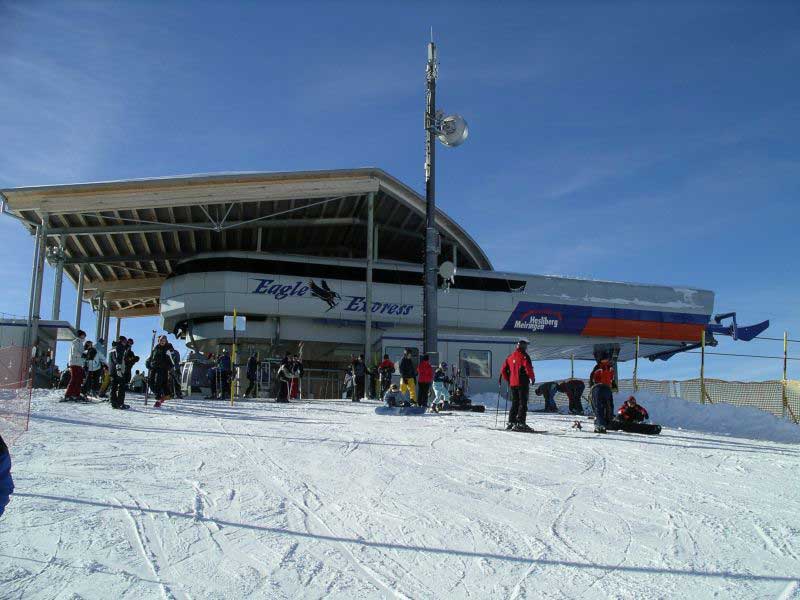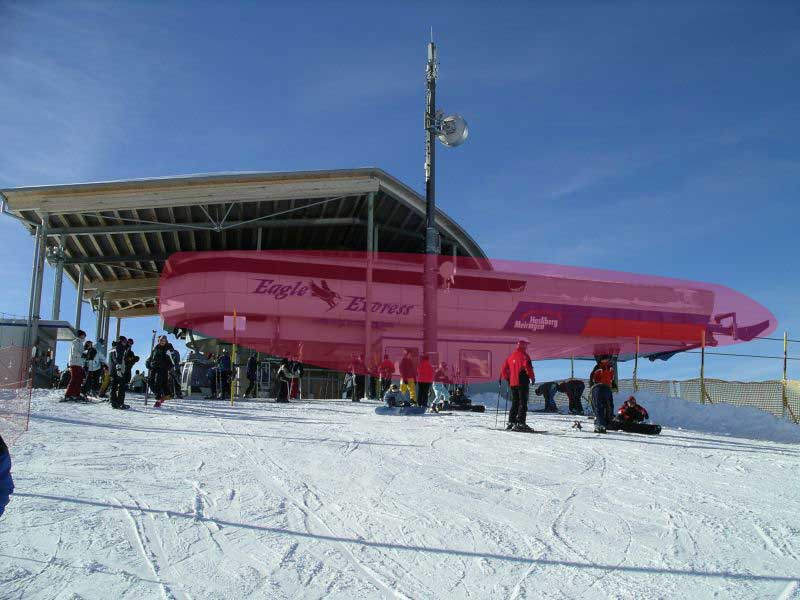The other week we talked about the difference between those features that are intrinsic to a transit technology and those things that are extrinsic. Intrinsic features are those things that make a technology what it is; they define it.
Extrinsic features, meanwhile, are those items and factors that affect the cost or operation of the system that uses the technology in question but are not dependent upon the technology itself. Extrinsic features may define a specific system, but often obscure the intrinsic qualities of the technology being used.
For example: Intrinsic to buses is the fact that they operate on rubber tires. Extrinsic to buses is what the bus stations look like and how they integrate with the surrounding traffic. The key here is to understand that intrinsic features are going to be standard across quantitative performance-cost measures (such as cost or maximum speed) whereas extrinsic features may cause different applications of the same technology to vary wildly in their performance-cost packages.
(Note for the transit geeks: Average speed is an extrinsic feature of any transit technology, not an intrinsic one.)
This got me thinking a lot about the issue of urban gondola station infrastructure and urban gondola architecture.
As we’ve seen in the past, the actual cost of installations (such as in Caracas and Koblenz) can vary widely due not to the technologies used but due to the station architecture, land expropriation and civil costs. This has caused wild swings in the price of systems (here and here for example) while the cost of the actual gondola technology has stayed relatively consistent over the years and across systems.
So remember: Gondola station infrastructure is intrinsic to the technology and it’s pretty hard to negotiate on price. If you need a station to do x, expect to pay y.
But also remember: Gondola station architecture is extrinsic to the technology and you can pretty much do whatever you want with it. You want to wrap a gondola station in a full-scale replica of the Taj Mahal? Go for it. But that’s going to cost you more than a pretty penny and that cost has absolutely, 100% nothing to do with the cost of the technology itself.
The perfect image to demonstrate this is an image I found on Alpinforum of the Eagle Express in Hasliberg, Switzerland. Take a look:
It’s a great image because it strips away all the confusion. All the (intrinsic) infrastructure is white and metallic whereas all the (extrinsic) architecture is wood and brown. Only one set of stuff here is needed for the system to operate. The other stuff is completely extrinsic and extraneous to the system’s cost and operations.
So next time you’re confronted with a) the opportunity to design an urban gondola system or; b) a study or system that seems remarkably over or underpriced, ask yourself three questions:
Firstly, to what degree do extrinsic architectural features factor into the design? And secondly, are those extrinsic features needs or wants? And lastly, do any of those extrinsic features have an adverse effect on the performance-cost package of the system you’re designing?
That doesn’t apply just to gondolas either, but all public transit.
Endnote: No room for this idea in this post, but wouldn’t it be great if reports and studies (and the media that cover them) broke down – in easy-to-understand language – the extrinsic and intrinsic costs of public works projects? If the public could actually see what needs to be spent and what is being spent, perhaps a more intelligent dialogue on the project-to-be-built could be had. Maybe there should be a ratio for that? The E:I ratio?



6 Comments
You have surely hit a good spot.
If you compare all mass transport systems on the architectural/civil engineering part, just on INTRINSIC part, you will find surprises …
Example : Bus transit is reputed as the “lower cost option” , even with dedicated roadways ; one thinks “stops need just a sign and maybe a slightly raised sidewalk and canopy” , but if you have to factor the cost and space necessary to the repair/maintenance/storage and park sheds the sum differs a lot – but usually these are already availaible and thus not considered.
On this point, ALL the other transport systems , Trolleybus, Tramway, LRT and Subway have intrinsic rigidities and related costs really not comparable with cable transport . in Subways in particular stations-only costs could reach an pass the 50% of the total line cost!
A good heritage of the mountain-born and bred Gondola idea is that of having the smallest, simplest and most-compact possible machinery , this because building in mountains is hard and costly.
I wonder if this at end could be a limit instead of an advantage – in transports history tell us that big, imposing monumental buildings are the way to go ? just think how rail/ship/subway stations become real landmarks , from Union and Penn station to Moscow Subway to Southampton and Le Havre transatlantic quays ..
I think the Extrinsic/Intrinsic distinction could really change our discourse about public works projects in the developed world. It doesn’t seem, however, to be something that many people discuss.
I don’t know what to think about this other than that in Toronto we think too intrinsically now about transit. This results in un-innovative and un-engaging design and “transit realm” – which we see here through boring stations that were built in the past according to 1950’s WC designs throughout the subway stations!
To me intrinsic “design” is indicative of just thinking about the bottom line in the intervention/design. I think this is the downside of this capital structure and business like thinking.
I think another measure would also be that how a extrinsic design improves the revenue stream of an intervention due to its appeal to those that use it – how the quality and engagement improves its appeal and marketability as well.
I guess an example would be Movie Ticket prices – something you pay to go on a “ride” for as well – they up the quality of the picture and sound – they up the price of the tickets, and people still buy them.
I totally disagree with that, Christian. In Toronto, all we do is discuss “extrinsicies” (I’m calling dibs on that word, by the way). Think about the LRT debate and how it cuts both ways:
Those against LRT are comparing it to Toronto’s rather poor attempts to build right-of-way light rail along St. Clair and Spadina. But the poor performance characteristics of those lines have nothing to do with LRT – they have to do with poor design. Ironically, a lot of money was poured into those lines on extrinsicies that didn’t actually improve the line whatsoever.
Those for LRT, meanwhile, correctly point to LRT as a useful technology and cite plenty of positive examples worldwide. They ignore, however, Toronto’s history of mishandling the extrinsicies of LRT and assume that the LRT they’re being promised is actually what’s going to be delivered.”
Furthermore, Toronto (and Ontario’s) finances dictate a strategy focused on “intrinsicies” (dibs on that one, too). We have a massive transportation deficit in the city and I think everyone would agree that we’d rather get twice the transit for the same amount of money if it means cutting back on the extrinsic frills that have characterized much of Toronto’s recent spending (Museum Station, anyone?) .
Again, that’s not to say extrinsic qualities aren’t important – they are. But their a choice, not a need.
Your analysis provides me with one of those useful mind tidying moments. I am writing a piece for London Reconnections concening the Cable Car – The Mayor’s office it is rumoured took umbrage at our earlier consensual analysis that this was going to be the world’s most expensive cable car – possibly because it is – and that given the feverish electoral battle for the Mayorality taking place it is not surprising that the Mayor’s opponents are using this as a stick to poke him with.
The division between intrinsic and extrinsic is essential. All of the overrun factors are extrinsic. Building pylons in the river,building the northern terminal on a pier in the dock, rushing the details on land aquisition, forcing an organisation in organisational crisis,the London Development Agency to fund this exercise whilst it was being being dramatically downsized and merged into the Mayor’s larger organisation. The iconic signature pylon design – with which I am now personally enthused.
Intrinsically all of these aspects have gone well – the project delivery has thus far gone without a hitch and I think that the expected but not publicised June opening is a reasonable expectation.
It is not the engineering but the politics that have mucked this project up.
Exaggerated claims that this project will be self funding, an unwillingness to explain the rationale by a Mayor whose record in transport investment and management has been mixed have all added to the climate of scepticism. The fact that this is a “tourist attraction” rather than a significant solution to the problems of crossing the river in East London means that it will remain vulnerable to criticism when it runs empty through the bleak torist off season. It should have been built on a larger scale and link significant cross river interchanges – not connecting to the new trans-London Crossrail Station at Custom House Excell was and is a major error.
The Cable Car will however be a potent technology demonstrator that hopefully should embolden other projects elswhere in the United Kingdom – Old Oak Common in West London, Further Thames Crossings, Portsmouth Harbour and Liverpool all spring to mind.
The key thing that needs to emerge from the London situation is that the lessons learnt from its inception and construction should be drawn and applied elsewhere. The intinsic/extrinsic split is fundamental to drawing and explaining these lessons.
You comments made me think of a few things:
1. By any fair and rational analysis this is the most expensive gondola ever built. If he can locate one that’s more expensive, I’m willing to listen to his argument.
2. The rumours I’m hearing (and these are just rumours) is that only 15-25% of the total project went towards the E&M (what you buy from the manufacturers) and the custom towers. That’s well within industry norms and – if you ask me – a steal for the custom towers given the architectural contribution they’re going to give East London. That does, however, leave more than 75% of the costs to land acquisition, stations and consultants – which is troublesome.
3. One of the things that excites me most about cable transit is that it allows us to expand the debate about transit and actually separate the intrinsic from the extrinsic. That really wasn’t possible before cable, because we always kind of just spoke about LRT as LRT, subway as subway, bus as bus. I suspect we always understood the extrinsic/intrinsic divide but didn’t have the numbers, data or language to describe them. Now, because of the fact that we have such a wealth of information about the intrinsic costs of cable, we can conduct more informed analyses about which cities are best able to manage the extrinsic costs. I severely hope this begins to bleed into analyses of other transportation modes because I think it would severely improve the level of dialogue.
4. We also have to remember the extrinsicies of a technology go beyond just cost. They greatly affect the performance of the technology in both positive and negative ways.